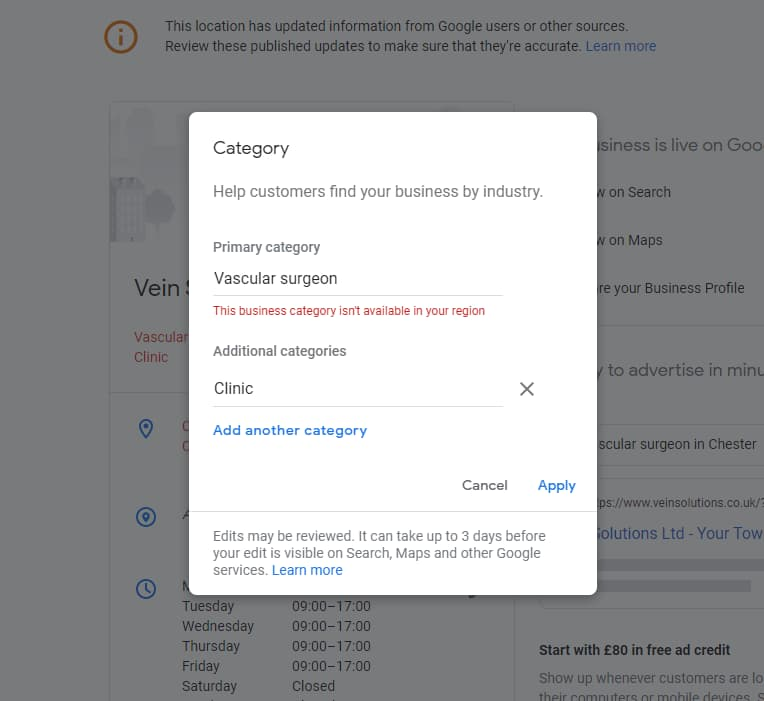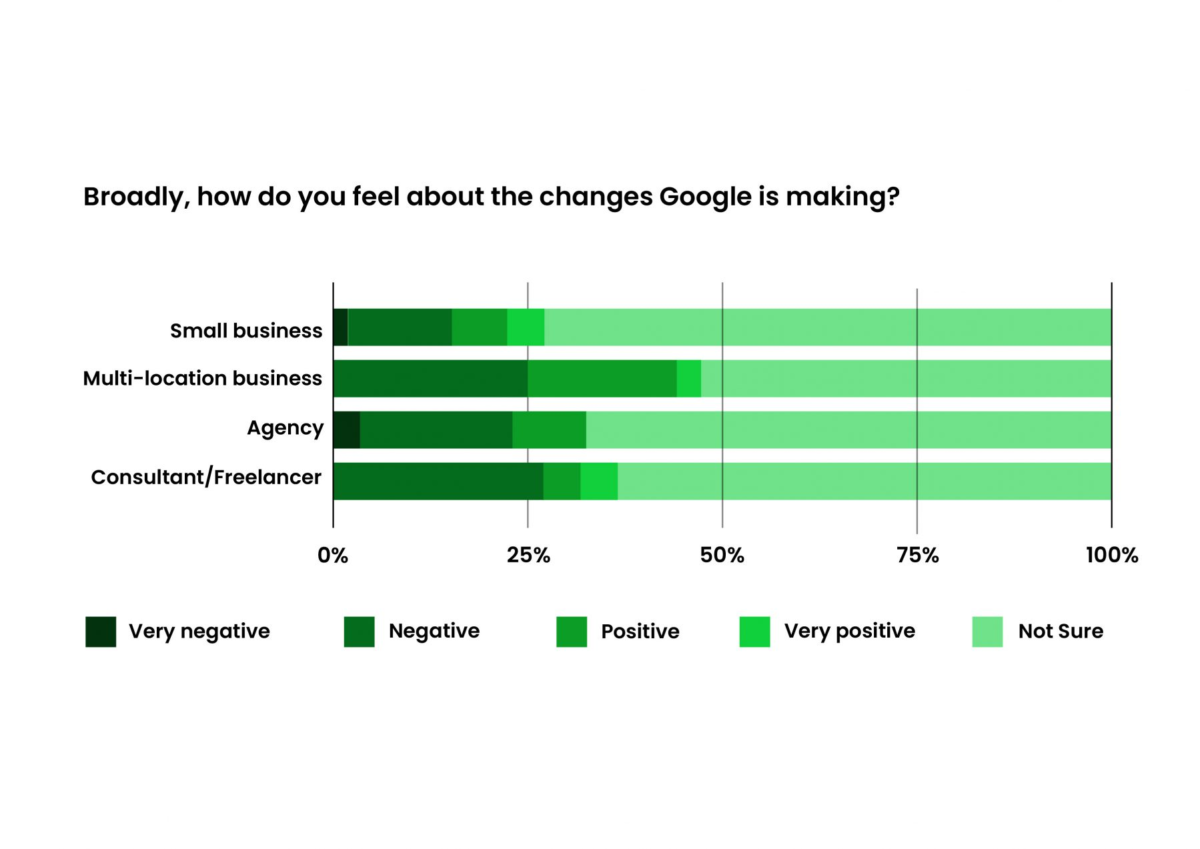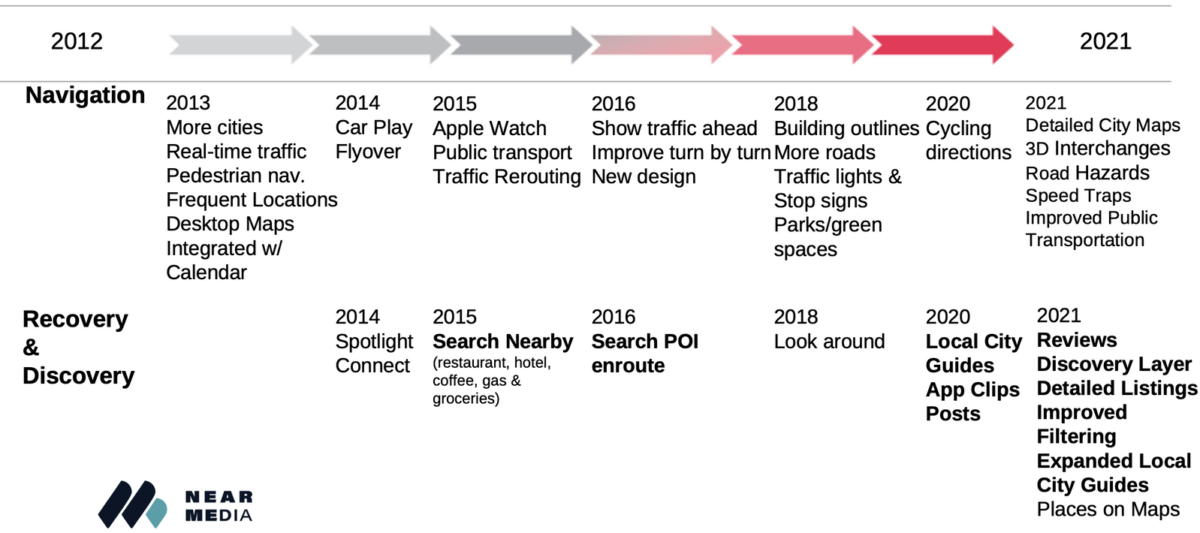In this week’s update, learn about Google’s new help documentation on reviews; Instagram’s TikTok transition; a medical category bug in Google profiles; mixed awareness of GMB’s new name; business opportunities in the metaverse; and Apple’s new focus on local.
Local Memo: Google Says a Mix of Positive and Negative Reviews Is More Trustworthy
Google’s help documentation has been updated with language that suggests a mix of positive and negative reviews for local businesses is preferable to only having positive reviews, specifically because consumers find a mix of opinions more trustworthy and, presumably, suspect that reviews are otherwise somehow biased. The new language reads:
“Value all reviews: Reviews are useful for potential customers when they’re honest and objective. Customers find a mix of positive and negative reviews more trustworthy. You can always respond to a review to show the customers that you care and provide additional context. If the review doesn’t follow our posting guidelines, you can request to remove it.”
In other review-related news, Google’s John Mueller tells us that reviews on a website that are republished from other sources are not eligible for rich snippets in search, even if they are marked up properly with Schema for reviews. Mueller clarifies that reviews from Google and other sources are fine to republish but are automatically disqualified from receiving featured snippets. (For clarification, local businesses are also ineligible for featured snippets when publishing first-party reviews.)
Instagram Will Showcase Video in a Bid to Win Younger Users
Andrew Hutchinson, writing for Social Media Today, claims that all evidence points to Instagram working to replace its scrollable photo-centric homepage feed with a full-screen display of posted images, videos, Stories, and Reels, with users navigating from one item to the next by swiping. In making these changes, Instagram would clearly be taking several UI cues from TikTok — in a bid, Hutchinson writes, to stem the departure of younger users from its platform.
He sees evidence of a trend in this direction in the consolidation of Instagram’s video creation tools as well as recent statements such as this from Instagram’s head of product Adam Mosseri: “We’re … going to be experimenting with how do we embrace video more broadly – full-screen, immersive, entertaining, mobile-first video.” Mosseri claimed earlier this year that Instagram is “no longer a photo-sharing app,” pointing the way toward more immersive, entertaining experiences. Mark Zuckerberg has also stated that the newly formed Meta will be focused largely on appealing to younger audiences.
Medical Category Bug for Google Profiles Reportedly Fixed
For several days in mid-November, dozens of medical categories went missing from Google Profiles, meaning that even medical practitioners with established profiles were seeing category errors. Affected categories ran the gamut from surgeon to pediatrician to immunologist. The error that accompanied these category choices read “This business category isn’t available in your region,” leading Tim Capper to speculate that Google was attempting to roll out some new regional category restrictions and inadvertently flagged medical categories as violating those restrictions. As of about November 22, the issue appears to be fixed globally.
An unrelated issue, also now apparently fixed, was recently causing the profile image in Google Profiles to open to a blank screen.
A Third of Users Are Unaware of GMB Renaming
According to a new survey from Bright Local, one third of users are unaware that the Google My Business platform is now called Google Business Profile. The survey was sent to 500 respondents who represented a mix of small business owners, multi-location businesses, agencies, and consultants. Of these groups, small business owners were the least aware of the changes, with 42% saying they hadn’t heard about them and only 12% saying they were very familiar with the details. By comparison, representatives of multi-location brands were more knowledgeable, with only 15% saying they were not familiar with the changes — notably, this figure was lower than for agencies and consultants at 28%.
A significant majority, 66% of all respondents, when asked how they felt about the changes, said they weren’t sure — but multi-location brand representatives had stronger opinions, with only just over half saying they weren’t sure, the lowest percentage of any group. About 25% of multi-location respondents viewed the changes as negative and a slightly lower percentage viewed them as positive or very positive.
BrightLocal also observed that it took about 4 years for search volumes for “Google My Business” to overtake “Google Places,” the prior name of Google’s local platform.
Courtesy BrightLocal
Business Opportunities in the Metaverse
In a post on Meta for Business, Facebook’s new parent company offers some additional hints for the role of the metaverse in the future of commerce, a narrative we’ve been following since the announcement of the new entity. The post claims that the metaverse will become a reality in the next decade, and that the company is “approaching the shift to the metaverse with the same excitement as the pivot from desktop to mobile,” believing it will represent “the biggest opportunity for modern business since the creation of the internet.”
Creating immersive experiences in today’s two-dimensional apps (see my earlier item about Instagram) is the way marketers can bridge the gap from contemporary technology to the metaverse, according to the post. Another strategy is to focus on enhanced experiences in physical reality, such as visualizing virtual furniture in a physical space. Finally, Meta predicts that consumer relationships built today in its social apps will somehow be seamlessly translated to the metaverse once it comes into being.
Is Apple Getting Serious About Local?
Mike Blumenthal has published part one of a new series about Apple Maps, describing Apple’s recent improvements to its local search product as an attempt to focus on exploration and discovery. Examples of this tendency include a new Explore tab which encourages users to discover new places in their immediate vicinity, as well as newly redesigned Place Cards that contain useful information about locations (“Wheelchair Accessible,” “Good for Groups’) along with calls to action in various forms, such as reservations for hotels and flyover views for landmarks. Apple Maps has released several new and useful features in the last couple of years, including “app clips” that allow brands to integrate app functionality (such as food ordering) directly into the Maps app; recommendations from professional food critics and others in Apple’s Guides program; and posts from businesses including a call to action. Blumenthal also reports that Apple has made steady progress in improving the accuracy of Maps and its usefulness as a navigation tool.
Timeline of Apple Maps changes, courtesy Mike Blumenthal / NearMedia
Damian Rollison
Subscribe to Local Memo!
Signup to receive Local memo updates and the latest on localized marketing, delivered weekly to your inbox.


